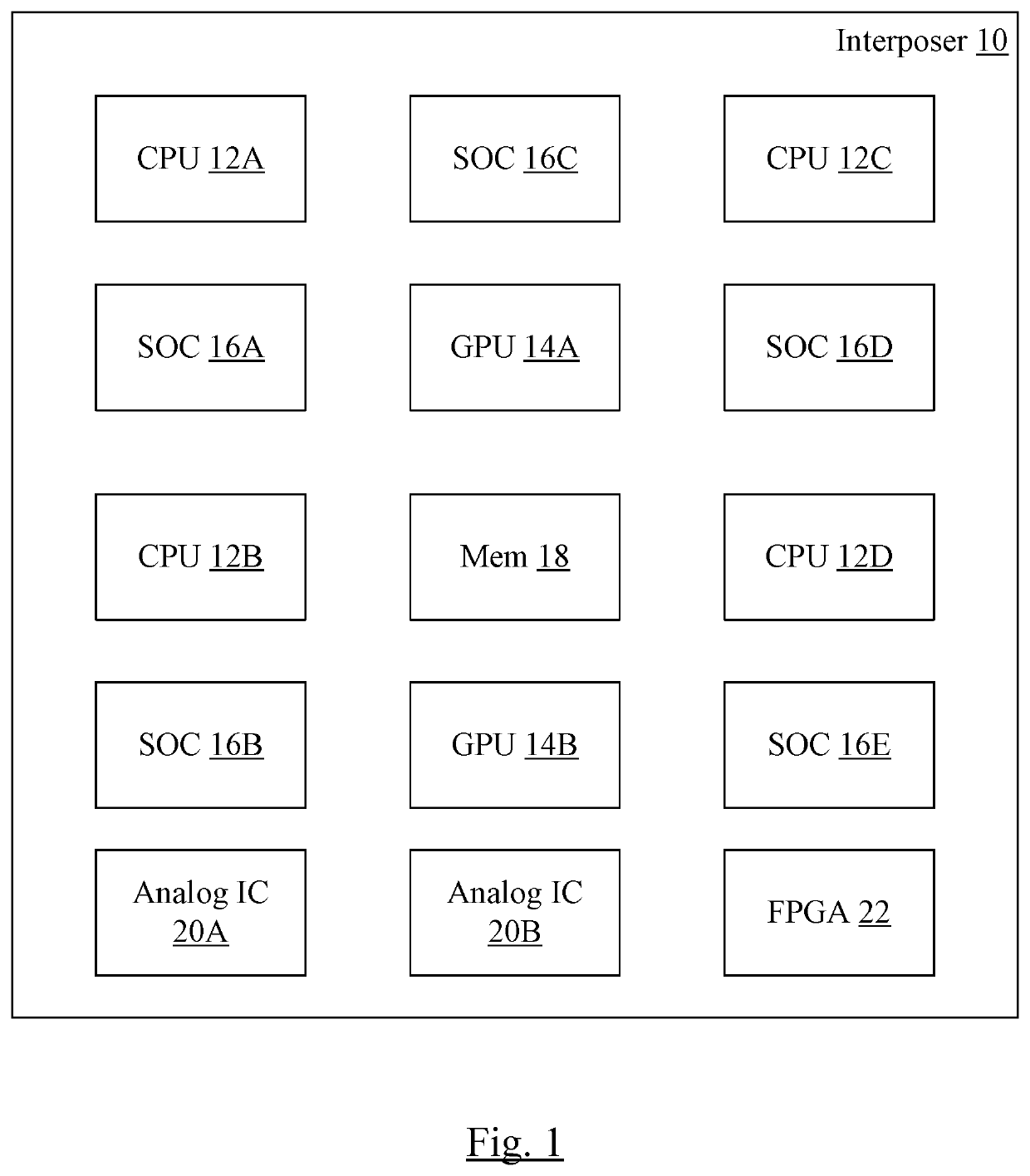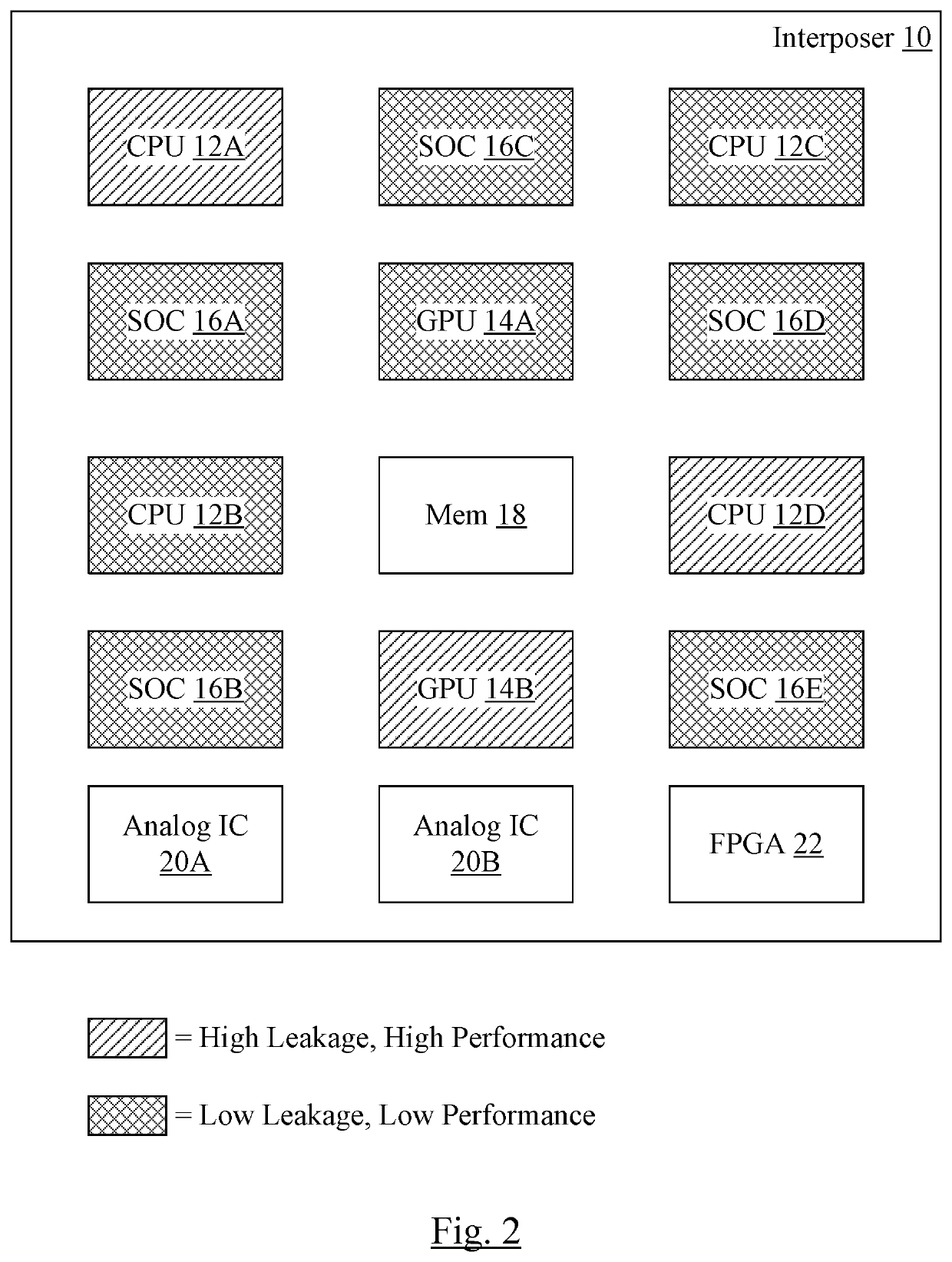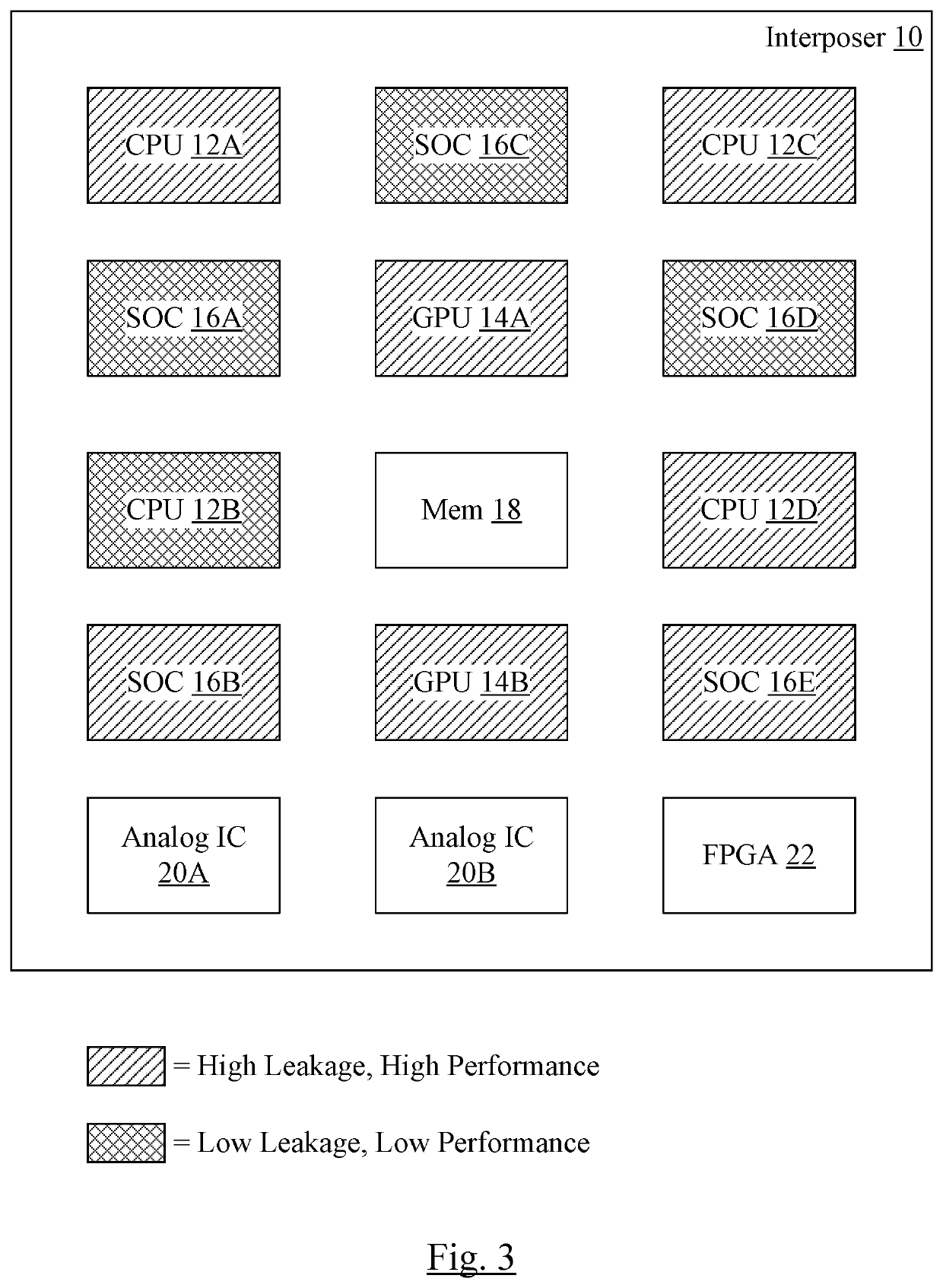Flexible system integration to improve thermal properties
a flexible system and thermal insulation technology, applied in the direction of semiconductor devices, semiconductor/solid-state device details, electrical apparatus, etc., can solve the problems of difficult heat removal, soc die shrinkage, complex heat removal, etc., to improve the overall system performance, and improve the effect of thermal insulation performan
- Summary
- Abstract
- Description
- Claims
- Application Information
AI Technical Summary
Benefits of technology
Problems solved by technology
Method used
Image
Examples
Embodiment Construction
[0021]Turning now to FIG. 1, a block diagram of one embodiment of an interposer 10 is shown with various integrated circuits attached to a surface thereof. In the illustrated embodiment, the integrated circuits include CPUs 12A-12D, GPUs 14A-14B, various other portions of an SOC in discrete ICs 16A-16E, a memory 18, one or more analog ICs 20A-20B, and one or more FPGAs 22. The memory 18 may be an integrated circuit as well, or may be multiple integrated circuits in a stack, in various embodiments.
[0022]The CPUs 12A-12D and GPUs 14A-14B may generally be capable of significantly higher power consumption, at least in some performance states, than other ones of the integrated circuits 16A-16E and 18. Generally, processors of various types may be capable of higher power consumption than other integrated circuit components. The higher-power-consuming components (e.g. CPUs 12A-12D and GPUs 14A-14B) may physically spaced out over the surface of the interposer 10, locating the high heat gene...
PUM
 Login to View More
Login to View More Abstract
Description
Claims
Application Information
 Login to View More
Login to View More - R&D
- Intellectual Property
- Life Sciences
- Materials
- Tech Scout
- Unparalleled Data Quality
- Higher Quality Content
- 60% Fewer Hallucinations
Browse by: Latest US Patents, China's latest patents, Technical Efficacy Thesaurus, Application Domain, Technology Topic, Popular Technical Reports.
© 2025 PatSnap. All rights reserved.Legal|Privacy policy|Modern Slavery Act Transparency Statement|Sitemap|About US| Contact US: help@patsnap.com



